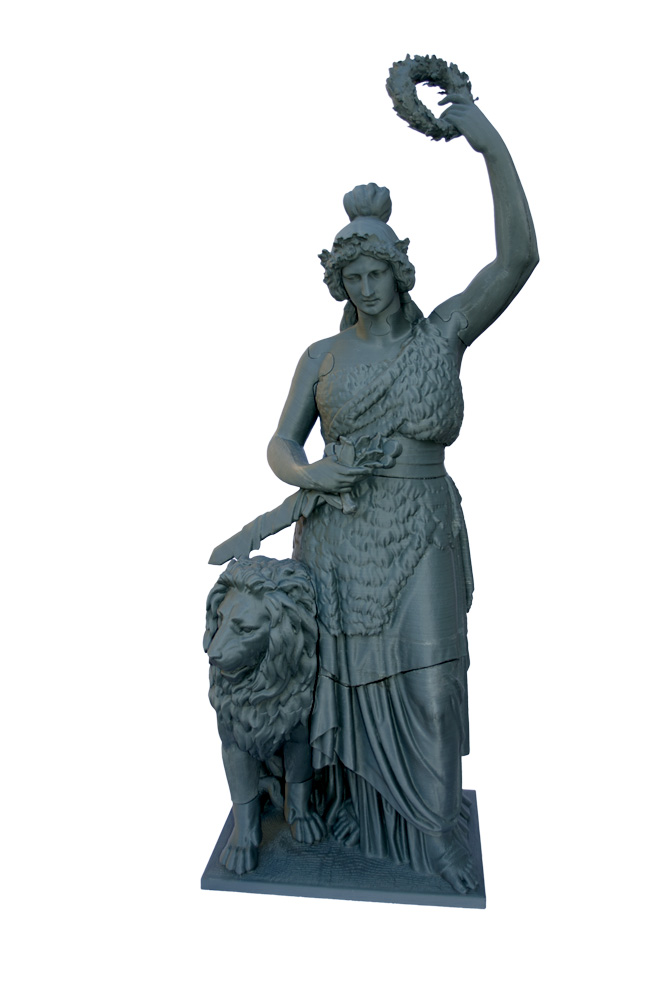- Client
- Haus der Bayerischen Geschichte
- Content
- Printing a 3D puzzle in hard rubber
- Related references
- 3D-Survey of the Bavaria
- Tags
The Bavaria statue in Munich has been documented and modelled in 3D by ArcTron back in 2002-2004. This current 3D project is an escellent example of how 3D data can still be used 15 years later. Only this time for a completely different purpose.
In the year 1850 the monumental statue of the Bavaria, accompanied by the Bavarian lion, was unveiled on the Theresienwiese in Munich in a ceremonial act. With a height of 18m it is the largest cast colossal bronze statue of modern times.
In the year 2002 extensive renovation measures on the statue were necessary. For the first time it could be examined up close in detail from a scaffold. In order to take advantage of this unique opportunity of accessibility, the Freistaat Bayern commissioned a photorealistic 3D documentation survey. It should serve the interest of scientists, restorers and the interested public alike. The engineering office ArcTron 3D (located near Regensburg, Germany) and Dr. König (Potsdam), specializing in three-dimensional surveying, as well as the software developer Polymetric (Darmstadt) jointly designed a specific data acquisition and data processing concept. It ranged from basic 3D surveying to setting up an information system and multimedia data presentation. At the end of 2004, the extensive work on this challenging project was finally compleded. The 3D documentation of large sculptures of this scale was groundbreaking for that time!
14 years later, ArcTron3D received a request from the “Haus der Bayerischen Geschichte” to “reactivate” this 3D model for producing a large-format 3D puzzle for the new “Museum der Bayerischen Geschichte” in Regensburg. For this purpose, the Bavaria model was first taken from the “depths” of the archive, “revived” and reduced to an acceptable polygon number. For digitally dividing the object into several “puzzle” pieces during the segmentation process, the geometry of the origitnal cast parts were taken into account. The puzzle pieces themselves were then redesigned with special interlocking and sliding connectors in a scale of 1:15. Finally the Bavaria parts were printed in flexible thermoplastic biomaterials (PLA-Soft) with a large-format 3D printer.
In the exhibition, visitors have now the opportunity to interactively assemble the individual elements of the Bavaria. They can learn about the production techniques and the form and design details of this largest colossal statue of modern times.
